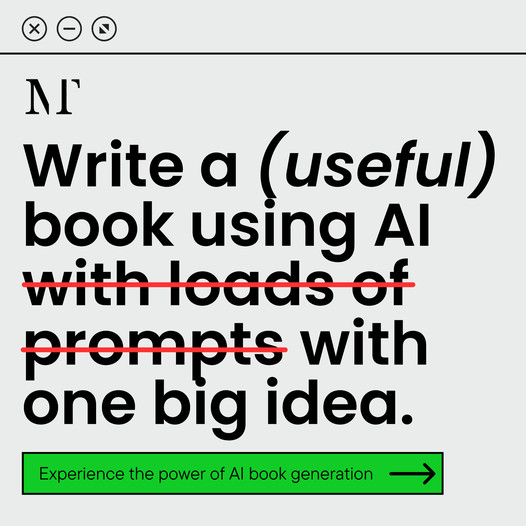Crafting Memorable Endings
Nailing the end of your tale can really add that wow factor, leaving your readers hooked long after they’ve finished. Getting the hang of writing a killer ending is a must for anyone telling stories.
The Big Deal about a Strong Finish
What does a top-notch ending bring to the table? Well, for starters:
| What it Does | Details |
|---|---|
| Wraps it Up | Offers closure, so the main drama is taken care of. |
| Hits ‘Em in the Feels | A great ending stirs emotions, making it stick in the reader’s mind. |
| Makes You Think | It gives your brain a workout, pondering the story’s themes and messages. |
That last bit of your story is what sticks with people once you’ve said the end. A killer conclusion can make the whole thing unforgettable and might even make folks share it with their buddies.
Building Blocks of a Standout Ending
Wanna craft an ending that rocks? Keep these in your writer’s toolbox:
| Element | What It Means |
|---|---|
| Themes Coming Full Circle | Circle back to the big ideas you’ve woven through the tale, packing a punch. |
| Character Evolution | Show your characters have been through the wringer and come out different. |
| Final Vibes | Paint a vivid picture to leave a lasting impression. |
| Tidy Up Loose Ends | Make sure the side stories are wrapped up nicely, leaving no dangling threads. |
By focusing on these aspects, you’ll whip up an ending that hits home. For more tips and tricks for sharpening your pen skills, check out our tips to boost your writing or spark some creativity with our writing prompts for newbies.
Types of Endings
Picking the right way to wrap up your story can make all the difference in how folks feel about it. Let’s break down three kinds of endings you might consider for your tale.
Resolved Endings
Resolved endings give your story a neat bow. Everything’s tied up, leaving no loose ends or dangling conflicts. This brings a sense of satisfaction as you address all the big questions a reader has been pondering.
| Resolved Ending Features | Description |
|---|---|
| Wrap-Up | Main problems are sorted out. |
| Growth | Characters really develop. |
| Closure | No questions left hanging. |
These endings work wonders in romance or mystery, where readers crave clear-cut answers. If you want more ideas on guiding your plot to a resolved conclusion, check out our handy tips on how to plot a novel.
Open Endings
With open endings, you leave the door ajar, letting folks chew over what might come next. They spark conversations, leaving readers to play detective about characters’ futures. This suits literary fiction or stories focusing more on characters than tight story lines.
| Open Ending Features | Description |
|---|---|
| Mystery | Some things stay unsolved. |
| Conversation Starter | Gets people talking and guessing. |
| Sequel Potential | Leaves a window open for more tales. |
Picture writing about a character stuck in moral muddy waters, where an open ending adds depth and intrigue. You can check out more about character dramas in our piece on how to develop characters in a story.
 What Poetry Feels Like
What Poetry Feels LikeTwist Endings
Twist endings flip the script, leaving you gobsmacked or seeing things in a new light. They’re about jaw-dropping surprises that make you question everything you thought you knew all along.
| Twist Ending Features | Description |
|---|---|
| Shocker | Drops a bombshell that spins the story on its head. |
| Emotional Punch | Stirs up big feelings. |
| Rethink | Forces a re-look at the whole tale. |
You’ll find this style in thrillers and mysteries, where the unexpected can pack a wallop. For tips on spinning these twists, dive into our article on writing tips for mystery novels.
By getting your head around these types of endings, you can hit the right note for your story and its message. Keep these pointers handy as you work out how to write a strong ending for your story.
Techniques for Wrapping Up A Story With A Bang
Nailing that ending is like the most satisfying part of the movie—you want folks to leave with a solid “wow” moment. Here’s some nifty tricks to help you close out your story like a pro.
Hit ‘Em With Déjà Vu
Bring it all back ’round to where you kicked things off. Pick up those threads: themes, symbols, or phrases from your opener. Drop ’em in your final scene, and bam—you’ve got a nice little package all tied up with familiar vibes. This trick does double duty: it makes the big ideas really stick and gives your reader that warm fuzzy feeling of coming full circle. Like, if you kicked things off with somebody grappling with doubt, wrap it up showing how they’ve leveled up and smashed that self-doubt to bits.
Tie Up Those Loose Ends
Got a big ol’ mess of drama happening in your story? Time to clean house. Whatever storm you whipped up for your characters, let them steady the ship. It doesn’t have to be picture-perfect, but make it make sense. You want folks to walk away feeling satisfied—not staring at a plot hole they could drive a truck through.
See, try laying it out in a little table for the bigger picture:
| Drama | Wrap-Up |
|---|---|
| Character’s in a who-the-heck-am-I funk | They look in the mirror and finally borrow Mr. Spock’s confidence. |
| Friends tangled in a lovey-dovey mess | One pair finds their groove, others call it an amicable quits. |
| Big baddie causing havoc in town | Hero pulls a mind trick and sends the villain packing, happy days restored. |
Let ‘Em Mull It Over
While you do want things resolved, there’s something to be said for keeping a few cards close to your chest. Leave a little wiggle room for the imaginations of your readers. Don’t hit them over the head with every answer; let that final turn of events have ’em pondering and chatting about it long after they’ve zipped through the last page.
Say your character makes a hefty sacrifice—hint at the ripple effects without spelling it all out. That way, your readers stay hooked, chewing over the possibilities even after they’ve closed the book.
Take these tips and ace that final scene, leaving readers all starry-eyed and ready to talk about your story non-stop. If you’re looking to tighten those writing skills, check out some pointers in how to improve writing skills.
Common Mistakes to Dodge
Ending on a strong note is like putting an exclamation point on your story. Knowing what to skip can make sure your last page packs a punch. Here are some goof-ups we all want to ditch while polishing off your piece.
Hasty Endings
Probably one of the biggest flubs is rushing your wrap-up. Speeding through the finish line can leave important stuff in the dust, making your readers go, “Wait, that’s it?” Slow down, stitch your ending together with care, making sure everything comes together nicely. Consider these bits when wrapping things up:
| What to Watch | Why It Matters |
|---|---|
| Tying up Conflicts | Keeps your readers content |
| Growing Characters | Gives a sense of completion and flow |
| Theme Wrap-Up | Highlights the story’s takeaway |
Throwing in Random Plot Twists
Sure, plot twists can be cool but tossing in random ones right at the end can throw your readers off. Bringing in new surprises that don’t mesh with the rest won’t do you any favors. Stick to what you’ve set up and keep it all on point. To steer clear of chaos, remember:
| What to Remember | How to Nail It |
|---|---|
| Maintain Flow | Make twists match character goals and personalities |
| Drop Hints | Weave clues into earlier story bits |
| Ditch New Turns | Make any shockers gel with the bigger picture |
Letting Loose Ends Dangle
Leaving things hanging is a surefire way to bug those who want closure. Make sure to resolve big happenings, character tracks, and burning questions to leave folks satisfied. When crossing the finish line, think about this:
| Thing To Do | What’s Up Next |
|---|---|
| Subplot Wrap-Ups | Tidy up side stories or give them some meaning |
| Character Journeys | Complete their story with a glimpse of their future |
| Revisiting Themes | Bring back important themes to end on a high note |
Dodging these slip-ups can help craft a killer finale. If you’re on the hunt for more ways to up your writing game, check out guides like how to polish your writing skills and writing tips for budding authors.
Editing and Fixing Your Ending
Tuning up your story’s ending is a big deal—it needs to hit home with your readers and tie everything together in a neat bow. Go at this task with care, and it’ll make your story shine bright.
Getting Opinions
Chatting with pals or writing squads is like gold for sprucing up your tale. Letting others peek at your ending gives you fresh insights. They might spot bits that are murky or offer tidbits on tweaking. Constructive chatter opens your eyes to stuff you might’ve missed, letting you polish your closing lines.
Here’s how to collect that crucial input:
| Feedback Method | Description |
|---|---|
| Peer Review | Show your work to other writers for feedback. |
| Writing Groups | Connect with a gang focused on helping each other. |
| Beta Readers | Ask folks who aren’t writers to give it a read and share their gut reactions. |
Tweaking Things Up
With feedback in hand, it’s time to get your hands dirty. Fixing your ending might mean changing words, tweaking the plot, or reshuffling a character’s journey to fit the puzzle. Aim for crystal-clear ideas that hit their targets—whether that’s solving problems, stirring feelings, or leaving readers pondering.
Here’s a checklist for those revisions:
| Area to Revise | Action |
|---|---|
| Clarity | Keep your main points sharp and to the point. |
| Pacing | Make sure the ending unfurls naturally from the story. |
| Emotional Impact | Check if it tugs the right heartstrings or tickles the brain as intended. |
Making It Mesh with Everything Else
The end’s gotta sing the same song as the rest of the story, not skip a beat. So, loop back and check your early scenes. Keep the themes echoing in the finale and let each character’s journey find a satisfying payoff.
Here’s what to inspect for a seamless finish:
| Coherence Aspect | Considerations |
|---|---|
| Theme | Is your ending a reflection of the main vibes in your story? |
| Character Development | Do your characters’ choices and growth fit their story paths? |
| Plot Resolution | Have you wrapped up the big threads in a way that satisfies? |
Focus on opinions, edits, and consistent flow, and you’ll nail that ending. Want more tips? Check out our piece on how to improve writing skills.
Final Touches for a Stellar Ending
Tying a neat bow on your narrative takes a bit of finesse and thoughtfulness. Focus on the ingredients that make your conclusion pop, stir emotions, and deliver the essence of your story with oomph.
Polishing Your Final Paragraph
Think of the last paragraph as your story’s parting gift. To make sure it leaves a mark, stick with clear and punchy language. Don’t go wandering off with new ideas; instead, give a nod to your favorite themes. Try on these techniques like a well-loved pair of shoes:
| Technique | Description |
|---|---|
| Strong Opening Sentence | Kick off with something that demands attention. |
| Key Themes Recap | Hit the highlights of your story themes for that warm feeling of closure. |
| Thought-Provoking Sentences | Wrap up with a nugget that gets readers mulling things over. |
Example Strategies
- Toss in a quote or a head-scratcher of a question so folks leave thinking.
- Circle back to the story’s start with a line that ties it all together snugly.
Creating an Emotional Impact
The end should pack a punch. To stir things up emotionally, try these:
| Method | Description |
|---|---|
| Character Reflections | Show how your characters have come out the other side. |
| Emotional Descriptions | Paint a picture packed with feelings. |
| Symbolism | Weave in symbols that echo back to your themes for a bonus layer of meaning. |
Make those emotions pop with sensory details. Your readers ought to feel every little twist and turn — the glee, the tears, the edge-of-seat suspense.
Reflecting on the Overall Message
Your finale should echo the heartbeat of your narrative. To land your message loud and clear:
| Consideration | Steps |
|---|---|
| Theme Reinforcement | Make sure your ending dances in time with the story’s message. |
| Character Actions | Show how their choices fit or clash with the big idea. |
| Reader Takeaway | Leave them with a thought or two that lingers like a good tune. |
Nail these final touches and your story’s end can leave a lasting print. It’s the kind of ending that sticks with your readers, backing up your writer’s voice in their memory. If you’re itching for more ways to up your writing game, swing by and check out how to improve writing skills for more nifty ideas to add to your playbook.

 Grab my poetry book, 'we're all just wanderers in the end' Here
Grab my poetry book, 'we're all just wanderers in the end' Here AD: Your Book Finally Written...
AD: Your Book Finally Written...